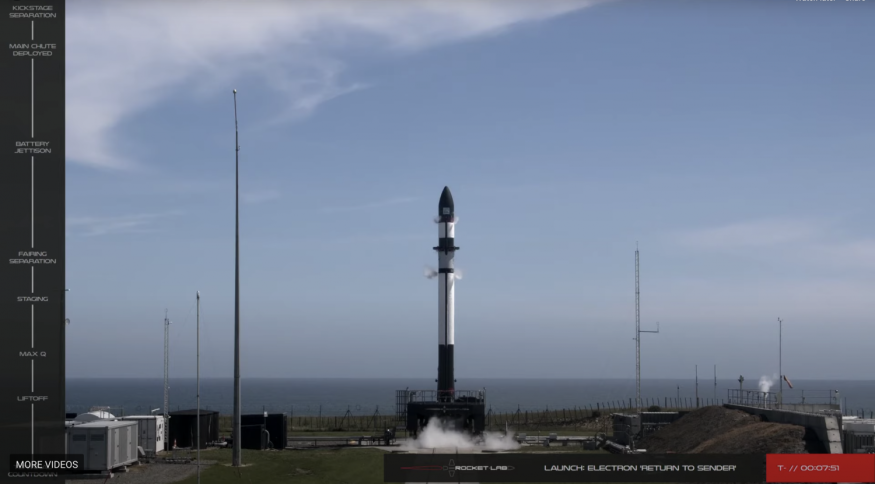After sending one of its rockets into space, the tiny satellite booster Rocket Lab safely took the spacecraft down to Earth on Thursday. SpaceX's competitor softly landed its rocket back under a set of parachutes in the ocean.
The maneuver was part of an elaborate dress rehearsal, according to The Verge. It was designed to practice virtually all of the actions that Rocket Lab would take in the future to retrieve and reuse its missiles.
The main rocket of the Rocket Lab is the Neutron, designed to send batches of tiny satellites into low Earth orbit. The Electron has been expendable for all of the company's 15 missions up to now with an entirely different rocket used for each new flight.
But in 2019, after upcoming launches, Rocket Lab revealed its intentions to try to conserve the remainder of the Electron rocket to reuse the vehicles for subsequent flights. And since then, the organization has moved steadily toward that target, trying new maneuvers on its missions aimed at pulling off a turnaround.

Practicing the steps to recycle and repurpose rockets
The recovery strategy for Rocket Lab is very different from those for SpaceX, which originally recovered its Falcon 9 rockets either on a landing pad or after launch on an autonomous drone ship. For the Electron, Rocket Lab often plans to carry the rocket down to Earth after a trip in a regulated fashion.
But the Electron can deploy a drug parachute until at a certain height and a key parachute to delay its decline. Rocket Lab would deploy a helicopter to snag hold of the parachute line as the Electron steadily descends to Earth, essentially grabbing the vehicle from mid-air and stopping the ocean from reaching the hardware.
[tweet] [tweet]
After firing the Electron from the company's main facility in New Zealand, Rocket Lab conducted certain actions during this 16th launch, including the parachute deployment. The corporation missed the final stage of snatching the Electron from the air, though and the rocket finally splashed down into the Pacific Ocean.
All along the aim was to see how the organization could get the rocket back intact and land it in the ocean in one piece. Peter Beck, CEO of Rocket Lab, tweeted out an initial photo of the Electron below a parachute, and hosts said further images will be shared in the coming days during the live stream of the test.
Can the space company carry out the intact rocket?
In order to study it in depth, Rocket Lab aims to fish the Electron rocket out of the water and return the machinery to a warehouse. During the launch and descent, engineers packed this Electron with external sensors to gather details, since the team needs to see what kind of condition the vehicle is in during its whirlwind journey to space and back. They'll then have a clearer idea of where they should attempt and catch the mid-air helicopter. It is quite likely that, if it's in decent enough condition, this specific rocket will launch again.
Although the recovery gained much of the publicity, Rocket Lab also launched 30 satellites on this flight into orbit. The satellites ranged from monitoring to contact probes, which even contained a vehicle to show a revolutionary tethering technology intended to eliminate unwanted and unsafe debris from orbit.
Gabe Newell, the creator of Valve Tech, supplied a 3D-printed statue of a garden gnome was also on this mission. The statue is modeled after a prop from the Half-Life video game series, called Gnome Chompski, which served as a pleasant way to simulate mass during the ride. Newell promised to contribute $1 for every citizen who tuned into the Rocket Lab's launch livestream to the Starship Pediatric Intensive Care Unit in New Zealand for this mission.
Check out more news and information on Space on Science Times.
© 2025 ScienceTimes.com All rights reserved. Do not reproduce without permission. The window to the world of Science Times.












